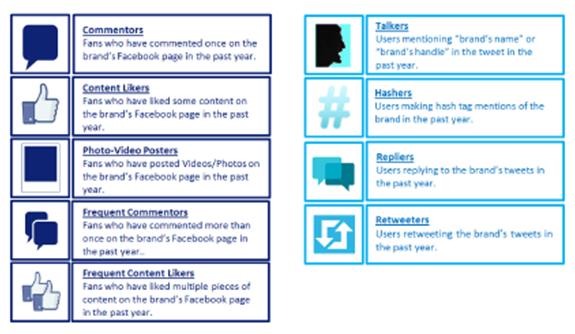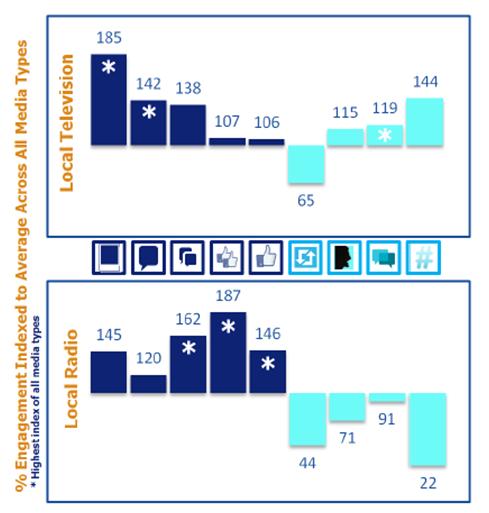A new study from TVB says a lot about how local television is able to both aggregate a large audience and generate active social media behavior. In TV, second screen viewing and fan engagement are major topics of conversation.
This research conducted in partnership with Colligent, a social affinity mapping company, looked at the social activity (Facebook and Twitter) across 570 television stations, as well as more than 4,400 broadcast and cable programs.
The study acknowledges that fan engagement and social activity is a big deal in local television, especially when it comes to photo and video posting – activities that we have been carefully tracking in our Techsurvey studies as well. As the study concludes, “Of all media types available in local markets, local television offers the most balanced set of consumer activity on both social media platforms, maximizing a marketer’s potential to turn paid media investment into earned brand affinity.”
That’s true, but radio looks very solid, too. The study also measured the activity of more than 1,800 radio stations on these same measures. The results look excellent when you look at the indices.
Here’s the key to activity in the TVB/Colligent study:
 And now here are the results that compare local television to local radio:
And now here are the results that compare local television to local radio:
Local radio looks solid on the Facebook side of the ledger (dark blue). It is especially solid for photo/video posting with an index of 145 and Facebook commenting (120), and leads the media league in three key areas: frequent commenters, frequent content likers, and content likers on the station’s Facebook page in the past year.
The Twitter indices (in aqua on the right) are below average, and this is where the real-time tweeting for television looks very strong.
But this acknowledgement that local radio is successfully engaging audiences with its Facebook efforts, expanding its footprint, and keeping the conversation going is a strong sign that much of what Lori Lewis has been preaching to radio in the past year is taking hold.
More so than every other medium – TV, newspapers, and cable – radio is creating “cultural currency” of its own. As TVB defines it, think about it as “how culture become currency and why there will always be a need for its mass production. Mainstream media products have now become that glue that connects our virtual and physical lives and just like monetary currencies, different cultural products provide different value.”
In radio’s case, local market engagement is at the epicenter of this social activity.
We are seeing more signs that it’s working.
- Media In 2025: Believe It Or Not! - January 15, 2025
- Every Company Is A Tech Company - January 14, 2025
- The Changing Face Of Social Media (OR WTZ?!) - January 13, 2025





Leave a Reply